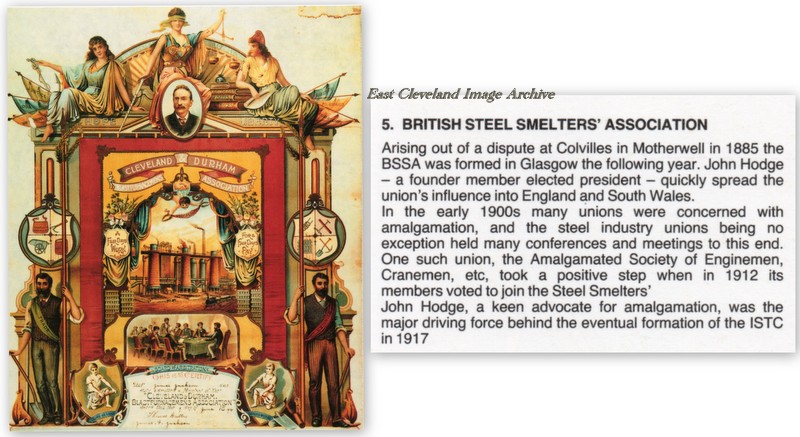
Scottish Steel Smelters union card; note the view of the Forth railway bridge at the top of the card.
Courtesy of the collection of Eric Johnson.
|
|
||
 Scottish Steel Smelters union card; note the view of the Forth railway bridge at the top of the card.
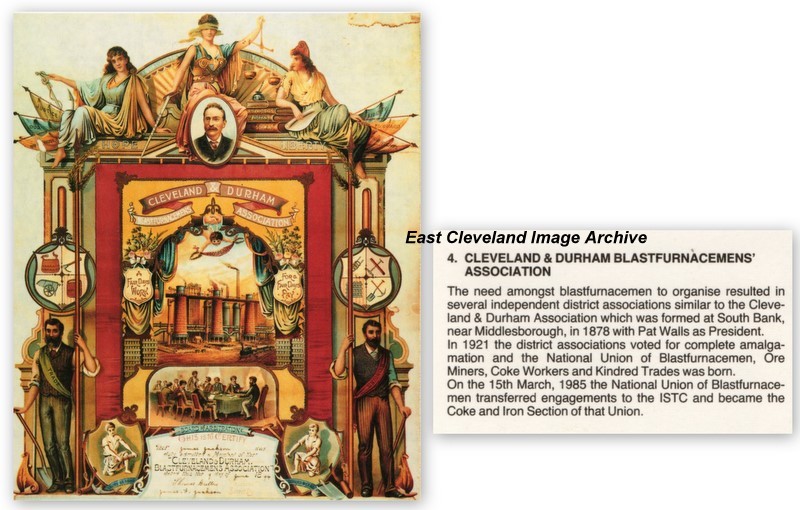 A Blast Furnace man’s union card. Courtesy of the collection of Eric Johnson. 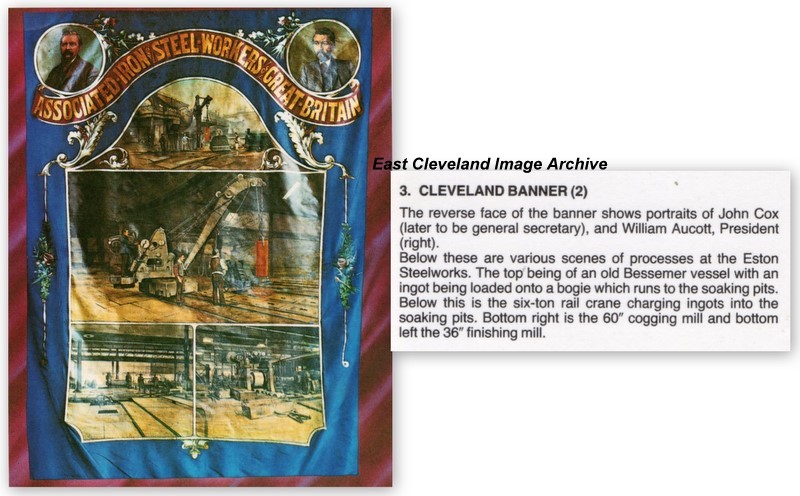 The front of the previous banner, showing several steelworks scenes. Courtesy of the collection of Eric Johnson. 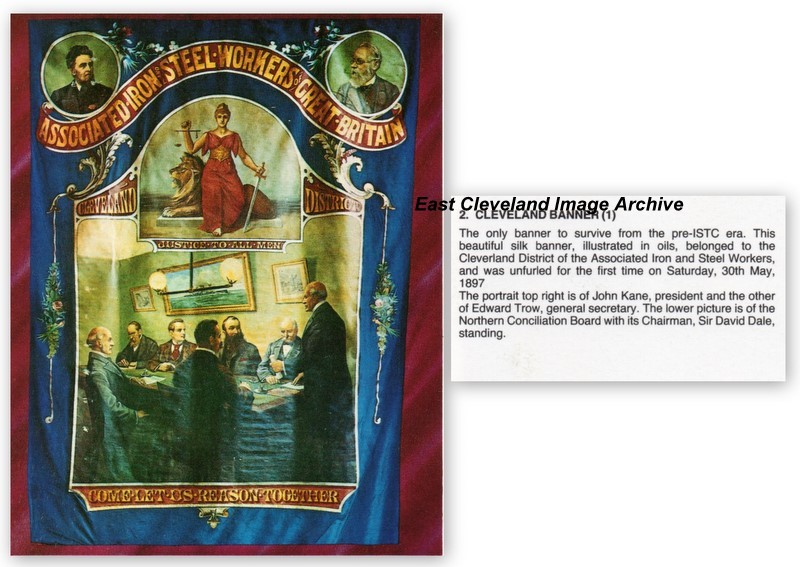 A brief history of the banner: after the unfurling ceremony the banner disappeared around 12 years later, and was lost until in 1950. It was discovered at the King’s Head Hotel, Grangetown; furled and lying in its dust covered box, in a sad state of decay. Sent to the Middlesbrough office and then to Union H.Q. in London in 1971. Proving too large for the union museum it returned to its box. John Thomas has advised: “The Cleveland District of the Associated Iron and Steel Workers Banner, the gentleman seated at the rear with a beard was my Great Great Grandfather Edward Thomas (a member of the Northern Conciliation Board). He was born in Holywell Wales and is buried in Eston Cemetery, the grave stone was erected by his fellow workmen in recognition of his valuable services rendered as a representative.” “ Courtesy of a collection of Eric Johnson; thanks to John Thomas for the update. 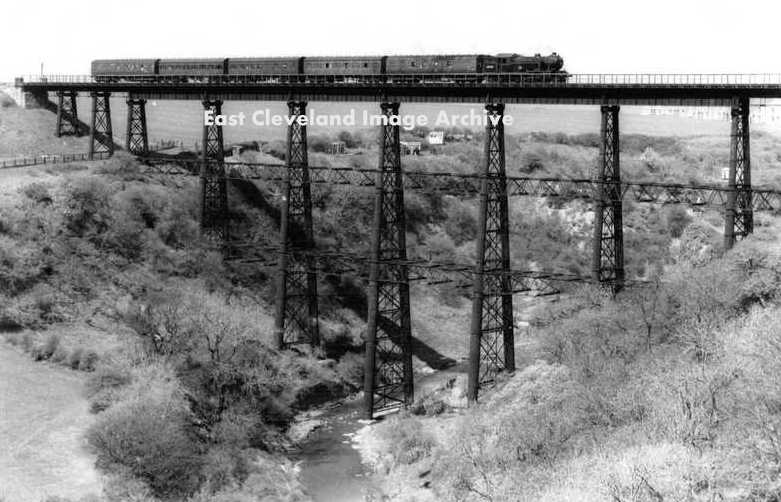 Train bound for Whitby, five coaches were normal in summer, reduced to two or three for winter service; believed to date from the mid 1950s. Mark Thompson ha sadvised: “A photograph of Staithes Viaduct, taken from the landward side, showing a 5 coach train travelling towards Whitby, headed by a large tank engine (possibly an A8 (4-6-2T) or maybe a BR Standard tank (2-6-4T) – or even a Thompson L1 tank (2-6-4T).” What a remarkably scenic railway this was – nowadays it would be the ideal candidate for preservation – and we cannot blame Dr Beeching for the closure of the line. As Andrew Hogan tells us: ”This line closed in 1958, Dr. Beeching did not come to power until 1962 and therefore had nothing to do with its closure.” Russ Pigott tells us: ”The loco is a class L1 2-6-4t and the photo was taken after 1956 as it has the later BR crest,maybe even closure day as there seems to be a lot of people (enthusiasts?) stood up and looking out of the coach windows.” Image courtesy Maurice Grayson, thanks to Mark Thompson, Andrew Hogan and Russ Pigott for the updates.
Sir Charles was seen as a great benefactor both here (he lived locally at Grinkle Hall, Grinkle Park – now a hotel) and at Jesmond, near Newcastle. His funeral on March the 7th, 1907 filled the little church at Easington, which he had erected as a memorial for his wife. This postcard view of the event was produced by Cattani of Redcar. The original image was a half-tone (an image made up of numerous little dots) and our initial scan caused patterning, fortunately this new image (although a copy of the original postcard) when scanned has provided a better image. Image courtesy of Iris Place.
This Graham’s of Redcar postcard view of the funeral of Sir Mark Palmer ( his residence at that time was Grinkle Park) shows the main road through Easington, note the lack of police to control the traffic! How times have changed. Sir Charles Mark Palmer is buried in the churchyard at Easington church. 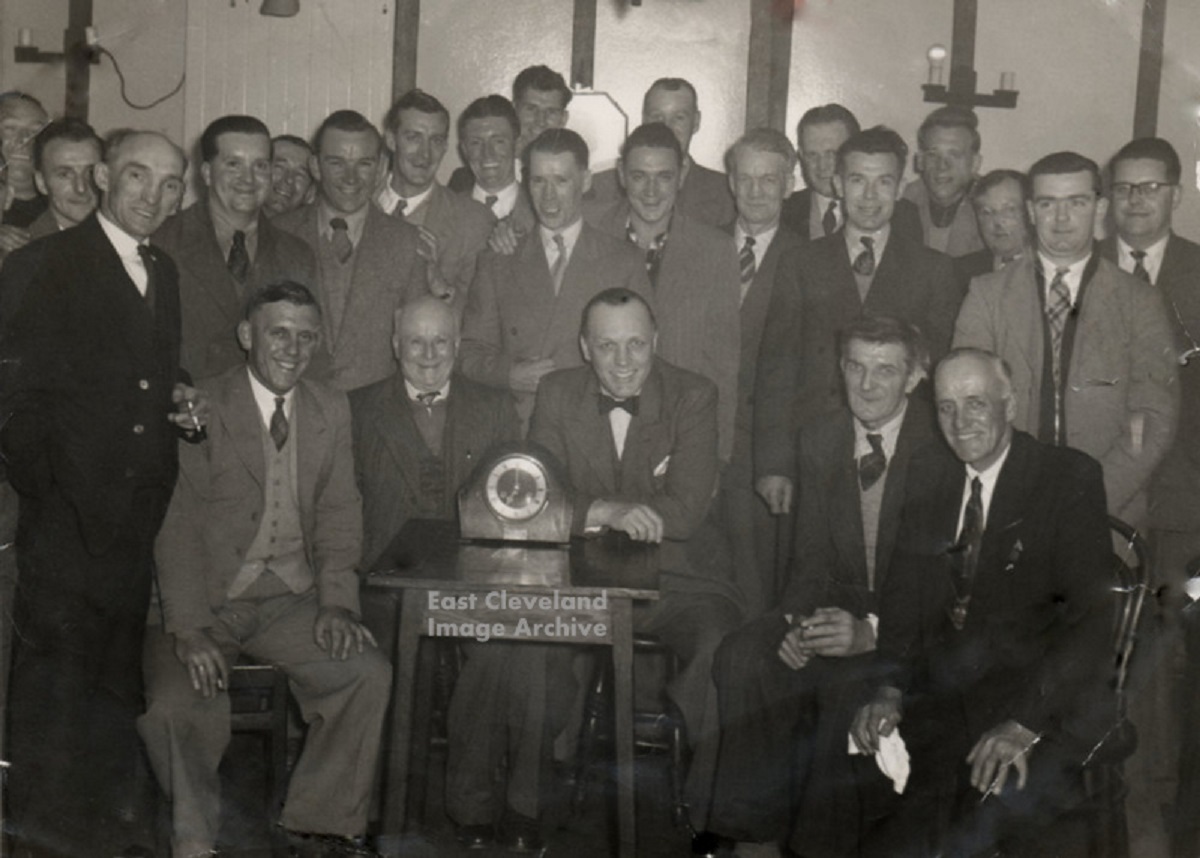 I am guessing it is a retirement because of the clock, but who, where and when. We are told by George Tremain: “The man on the far right at back wearing glasses is Stanley George Agar. He was the cousin of my father Claude Tremain.” Whilst Norman Patton has advised the Archive: “Eighth from the left, at the back, is ‘Tie Pin’ Ted Winspear who was one of the Liverton Mines Winspear family!” 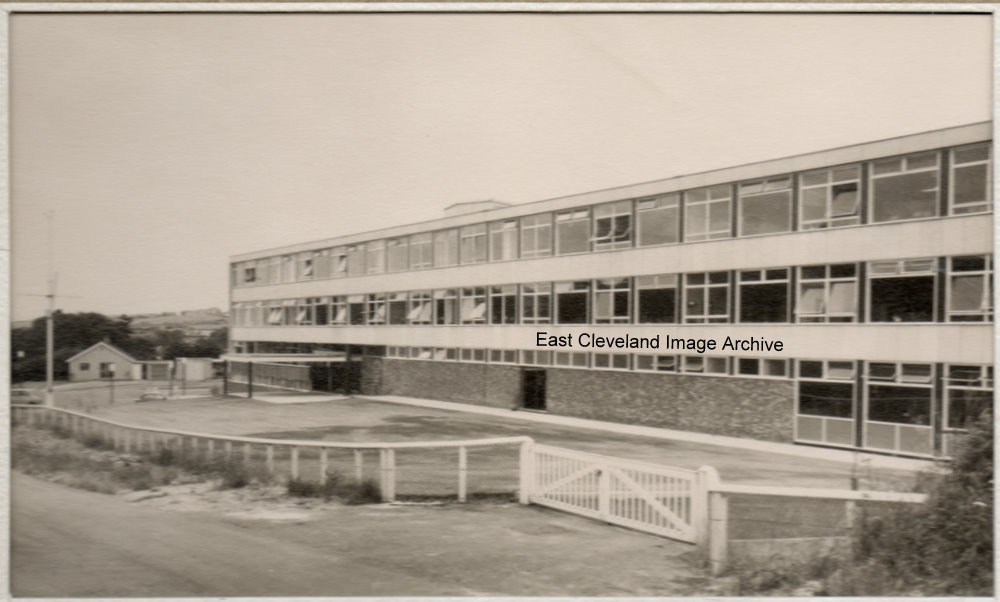 This image of Rosecroft School (although when it was taken would be known as Loftus County Modern School) was from the calendar of 1965 – both school and calendar – long gone now. 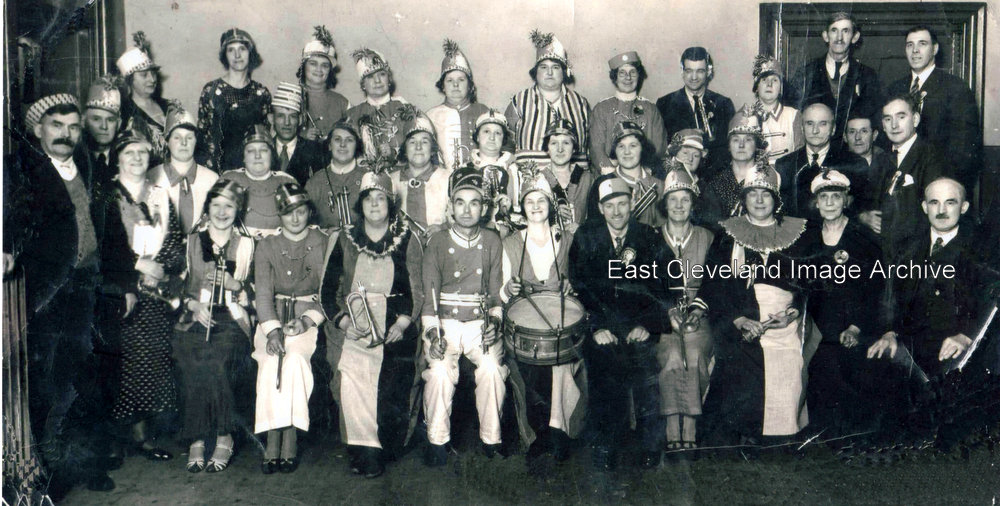 A party held to celebrate the Coronation of King George VI, in 1937 at the Skinningrove Institute. letting their hair down were; Stewart Dixon advised: “Mona Maddren sitting front row is my 1st cousin 3x removed. This was two years before she became Mrs Pascoe after marrying John Pascoe. I’m guessing the Maddren in the middle row is her mother, Lottie Maddren (nee Boyers). She will have been 21 years in this picture. Mona’s father, Samuel Maddren died in 1918 in France and Flanders when she was 2 years old.” Image and information courtesy of Eileen and Danny Found; thanks to Stewart Dixon for the update. |
||
Recent Comments